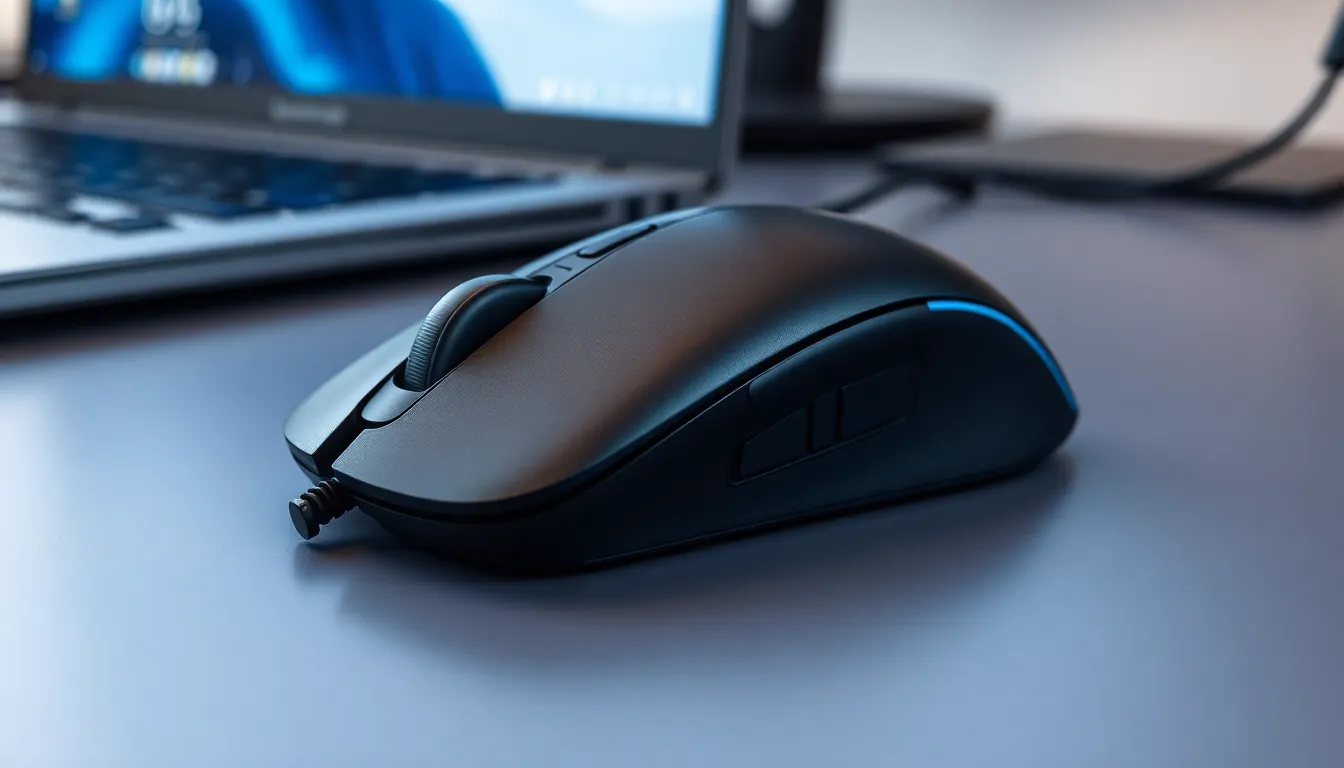In the vast world of technology, one tiny device has scurried its way into our daily lives: the computer mouse. This unassuming gadget may seem simple, but it’s the unsung hero of productivity, transforming chaotic clicks into seamless navigation. Without it, navigating a screen would feel like trying to dance with two left feet—awkward and frustrating.
Imagine trying to scroll through your favorite memes or tackle that important work project without the trusty mouse. It’s like trying to eat spaghetti with a spoon—possible, but not pretty. From wired wonders to wireless wizards, computer mice come in all shapes and sizes, each designed to make life just a little bit easier. So, let’s dive into the fascinating world of computer mice and discover how this small device packs a big punch in the realm of technology.
Table of Contents
ToggleOverview of Computer Mice
Computer mice serve as essential tools for enhanced productivity and user interaction in digital environments. Offering various models and features, these devices significantly impact everyday technology use.
History and Evolution
The concept of the computer mouse emerged in the 1960s, introduced by Douglas Engelbart, who aimed to improve human-computer interaction. Initially, these devices consisted of wood and featured two metal wheels. Over the years, technological advancements transformed the mouse into a sleek plastic device, incorporating new functionalities. By the 1980s, optical technology replaced mechanical components, enhancing accuracy and responsiveness. Wireless models gained popularity in the late 1990s, eliminating clutter while increasing convenience. Continuous innovation has led to products with enhanced ergonomic designs, customizable buttons, and advanced tracking capabilities, ensuring that the computer mouse evolves alongside user needs.
Types of Computer Mice
Various types of computer mice exist, each catering to specific user preferences and tasks. Wired mice provide reliability and minimal input lag, making them ideal for gaming and professional work. Wireless mice offer portability, utilizing Bluetooth or RF technology to connect without cables. Ergonomic mice design reduces strain during long usage periods, targeting users with specific comfort needs. Additionally, gaming mice come equipped with high DPI settings, programmable buttons, and customizable RGB lighting to suit competitive gamers. Trackball mice utilize a stationary ball for navigation, allowing unique control options and less space usage on desks. Each type features distinct benefits, accommodating a wide range of users.
Key Features to Consider

Understanding key features enhances the choice of a computer mouse. Consider the following aspects to make an informed decision.
Sensor Technology
Optical sensors provide high precision for everyday tasks. Laser sensors perform well on various surfaces and offer greater sensitivity. Many mice utilize advanced technologies like 16000 DPI, ensuring accuracy during fast movements. A high-quality sensor impacts the overall user experience, particularly in gaming and design applications.
Ergonomics and Design
Design plays a significant role in comfort and usability. Ergonomic mice reduce strain during long hours of use, promoting better posture. A compact design suits mobile users who work on-the-go. Additionally, varying shapes cater to different grip styles, making it easier to find an ideal fit. Attractive aesthetics may also influence user preference.
Connectivity Options
Wired connections provide reliability and zero latency, making them favorable for gamers. Wireless options, on the other hand, offer freedom of movement and clutter-free spaces. Bluetooth technology enables seamless pairing with multiple devices. Many mice also feature rechargeable batteries, ensuring convenience with extended use. Users may prioritize their connectivity based on personal needs and usage scenarios.
Popular Brands and Models
Numerous brands and models of computer mice excel in various applications, meeting diverse user needs.
Gaming Mice
Gaming mice offer high precision and customizable features, enhancing the gaming experience. Brands like Razer and Logitech dominate this market with models such as the Razer DeathAdder and Logitech G502. These devices usually feature adjustable DPI settings, allowing for rapid sensitivity adjustments during gameplay. Additional functionalities like programmable buttons enable gamers to optimize their performance. Comfort also plays an essential role; many gaming mice are designed with ergonomics in mind, ensuring prolonged use feels natural. As esports continue to grow, the demand for advanced gaming mice maintains a steady increase, driving innovation in design and technology.
Office Mice
Office mice focus on productivity and comfort in professional settings. Brands such as Microsoft and Logitech are well-regarded for creating reliable options like the Microsoft Sculpt and Logitech MX Master. Features like silent clicks and ergonomically shaped designs cater to long hours spent at a desk, enhancing overall user experience. Additionally, many office mice include multi-device connectivity, allowing seamless transitions between computers and tablets. Customizable buttons help streamline workflows by enabling quick access to frequently used functions. With an emphasis on usability and comfort, office mice continue to evolve, supporting efficient work environments.
Performance and User Experience
Performance and user experience play critical roles in selecting a computer mouse. Factors such as speed and responsiveness heavily influence daily interaction with devices.
Speed and Responsiveness
Speed defines mouse performance, affecting how quickly actions execute on-screen. Responsive mice minimize lag, allowing users to navigate, click, and scroll seamlessly. Optical and laser sensors provide varying speeds; optical sensors deliver excellent precision for general use, while laser sensors achieve greater sensitivity on multiple surfaces. Users focused on gaming often prefer mice with high DPI settings, enhancing tracking precision during intense sessions. The human factor adds another dimension: factors like polling rates can reach 1000 Hz, ensuring swift responses. Faster devices facilitate smoother workflows, directly impacting productivity and user satisfaction.
Customization Options
Customization options greatly enhance user experience. Many modern mice come with programmable buttons, allowing tailored commands to suit specific tasks. Gamers especially benefit from these customizations, as they can map complex functions to buttons for quicker access. Users can also adjust DPI settings easily, enabling precision adjustments based on activity. Some brands, such as Logitech and Razer, offer dedicated software enabling deeper customization, including RGB lighting and macro settings. Ergonomic shapes and sizes cater to preferences, offering comfort during long hours of use. Tailoring a mouse to individual needs transforms interaction, promoting efficiency and overall satisfaction during everyday tasks.
The computer mouse remains a vital component of modern computing. Its evolution from a simple pointing device to a sophisticated tool reflects the changing demands of users. With various options available, individuals can find the perfect mouse to suit their unique needs and preferences.
Whether for gaming or professional use, the right mouse can significantly enhance productivity and comfort. As technology continues to advance, users can expect even more innovative features that cater to their specific tasks. Embracing these developments ensures a more efficient and enjoyable computing experience.



